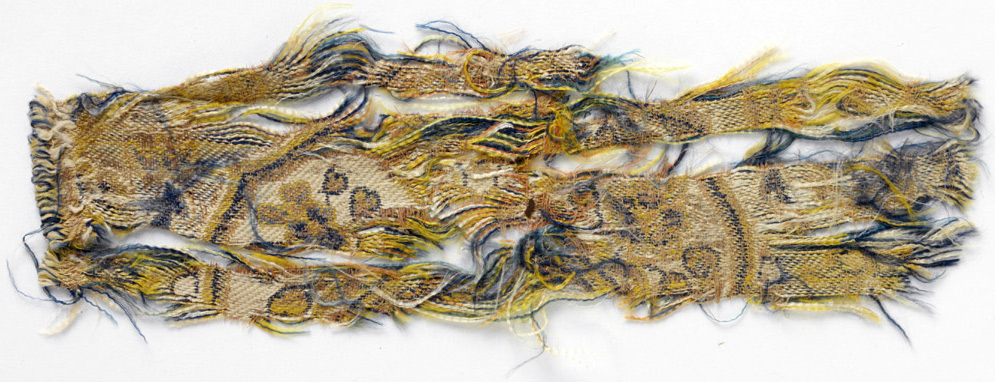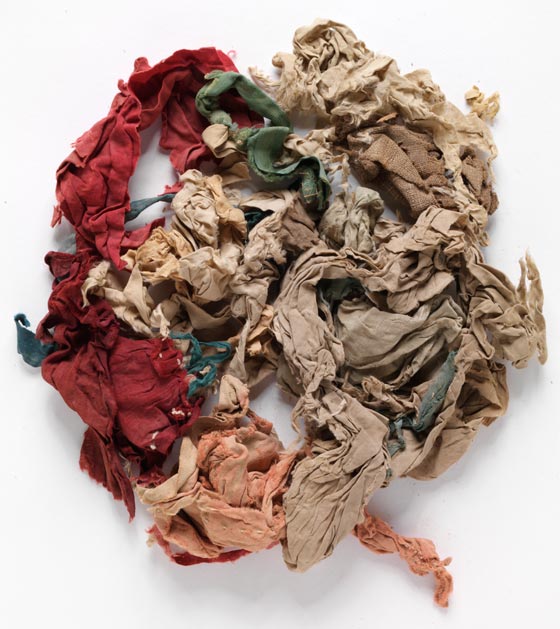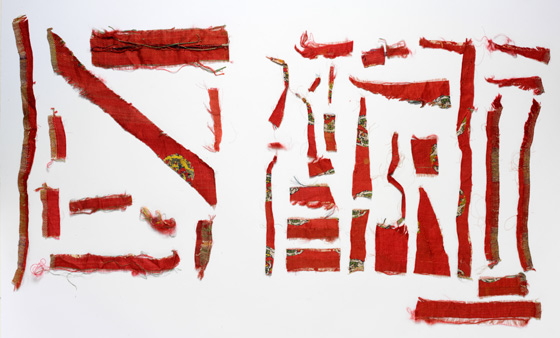I FIND JACOB YAZEJIAN’S company in a directory of textile recyclers around New York City. They have names like SOEX, We Export Rags and Texima LLC. His is called Sunrise Trading. It collects clothes in Florida, in donation bins scattered in parking lots of shopping centers and movie theaters. Their contents are shipped to tropical climates, where jerseys, nightgowns and flip flops find new lives under the same sun.

Let me tell you how I got involved in the business. Alright. So my father was a tailor in the Middle East. He started buying used clothing and repairing it and selling it. And little by little he’d buy more, and eventually he started buying a huge amount, way too much for him to repair. He would buy clothes from the Europeans and sell them. He finally opened a store in Beirut, and found that the European clothing was getting worse and worse. He left his two nieces there to run the store, and he came to the U.S. in 1946 or 1947, and started buying used clothes here.
At that time the market was on the Lower East Side, in what’s now Chinatown, around Delancey Street. All the stuff he would buy, he would take to a very small warehouse on Cherry Street. My dad would tell me stories about how, when you needed to move bales, you’d go to the Bowery and give the drunks a couple dollars.
He’d take the clothes up and bale them and send them to Beirut and Lebanon, where his nieces would sell them. That business grew, until he bought a Free Zone warehouse in Beirut, which meant you didn’t have to pay import duty. They’d send merchandise there and sell it in Saudi Arabia, Egypt, Syria, Iraq, Afghanistan, Pakistan. In the mid Seventies there was a terrible civil war in Lebanon, and everything was actually exploded and destroyed.
In 1963, he finally bought a warehouse on the edge of Hoboken, where we still are today. I would go to work with him as a teenager in the late Sixties and early Seventies, and I eventually expanded the export business into West Africa and East Africa. That’s the logistics of it. Now I’m going to tell you the down and dirty of how it worked in those days.
People would donate their clothing to Goodwill and Salvation Army. Goodwill and Salvation Army would sell their ‘Number One’ products – the cream – in their own retail stores, then bale all that junk that wasn’t sold and give it to graders, like ourselves. A three-cents-a-pound pack of commingled used clothing, once you separate it out, sells for various prices. Children’s baby rummage at twenty cents. Cotton shirts at twenty-eight cents. Cotton pants at twenty-nine.
You’d grade, oh my god, a few hundred different items. One hundred percent cashmere sweaters were sold to Italy for reprocessing. For jeans, nowadays it’s all about torn this and torn that, but thirty years ago pair of jeans with a hole in the knees used to be cut up and sold to the Navy. You’d clean your machinery with these wipers. One hundred percent polyester wipers would go to computer places, where you can’t have any lint whatsoever, ok? The best kind of wipers were made from men’s underwear, called gansies. So there’s like, a hundred different grades of wipers.
The overseas people would distribute clothes to people who would take bales, put them on their heads, and take them over to a local market, which very often would straddle railroad tracks because they’re wide and long. And they’d open up bales and sell them. And after that, just the hardship of being in Africa – the sweating and the salt in the body – would just disintegrate the clothes and then they’d need more clothes. Our claim to fame in those days was we could deliver a pair of pants overseas for the cost of a postage stamp.

One of those few hundred items you’re grading would be vintage clothing. Looking for vintage is like looking for a needle in a haystack. The vintage market changes drastically from year to year. One year the Japanese want over-sized printed T-shirts, the next year they want super small ones. One year denim jackets are in, button-down Oxford shirts are in, the next year they’re not. The way people service the vintage industry is the vintage buyers come in and train the graders as to what they’re looking for. The dredge of the industry for one period was men’s polyester pants, thick double knit pants. Those used to sell for six cents a pound, twelve cents a piece. Ten years later, those same pants were worth $15 a piece.
Eventually for me, grading two hundred different items became way too much. And what also happened was the overseas customers started to buy the goods directly from the Salvation Armies and Goodwills, and take them overseas and grade them themselves. This meant for $2 a day they could do what I was doing, paying $70 per day for a labourer. So that’s the way the business kind of works nowadays. You sell to India and India will grade them and send to Africa. They can’t even afford to sell it in their own market. You know, some countries are too rich and they don’t want used clothing. And if they’re too poor they can’t buy any clothing.
There are still graders here in the States that do well, but it was just too much for me. I was making money, alright; I didn’t need to have eighty, ninety people working for me. So I stopped. This was in 1995. That was the end of it. I said to myself, I have to go vertically down. I have to become a primary source. So I started collecting my own clothes the way Goodwill and Salvation Army do but under a for-profit banner. Which is what I still do. I don’t do it in New York because most of my customers come from tropical countries. I have about a thousand bins in Florida. When people buy them, no one has touched the clothes; no one has creamed it out, taken the best Levis. They’re in the original bags. It’s called credential clothing.
I got a degree in economics from City College. But my father asked me, ‘How many millionaire economists did I know?’ And I told him I didn’t know any. And he started rattling off people that had made millions in the used clothing business. It inspired me. I enjoy the business. I couldn’t envision myself as a 9-to-5-er sitting behind a desk wearing a tie and jacket. I was much more of a ruffian. I was more interested in being an entrepreneur. I had some luck for a long time. I sold a lot of goods. I never hit the big big times but I never went bankrupt either. I made a handsome living for many years, like a doctor would make a living.

There was a time where I would wear a different vintage shirt every single day. It was basically like, find something in the vintage barrel, wear it for a couple of weeks then throw back and pull something else out and wear it for a while. Oh my god, I’ve worn so many different clothes. Everything that I found and picked out was pretty cool, you know tweed jackets, three-button jackets, what do you call them… Oxford shirts. Hawaiian shirts. The sleazy slimy silk and nylon shirts. The T-shirts, the vintage Harley T-shirts, the rock and roll T-shirts. I’d wear all of them. If you ever watch Seinfeld and you see what Kramer was wearing, that’s basically it. I didn’t spend too much money. When I did have some money, I’d buy some Matsuda clothes, or Gucci or Yves Saint Laurent. But basically, I would wear what I found in the rags.
Now I’ve gone through the phase. After twenty years or thirty years of just picking this and that one out, I don’t do it anymore. First of all, I don’t have real access to the clothes, because we don’t go through the bags. And it’s played out. I do have about a dozen items that I’ve kept. Three or four Hawaiian shirts, and a couple of shirts with nice big fat polka dots on them. But I don’t have a closet of vintage clothes. In New York we only have so much closet space.
I don’t know what my dad thought of all this. He had a very hard life, you know. We were Christians in Turkey and we were exiled. We spent fifteen years in Aleppo and fifteen years in Beirut and finally found our way to Brooklyn. He was a very hard man, and not much of a talker about personal things. On his dying bed he’d ask, ‘How’s the business going?’ And I‘d say, ‘It’s going good,’ and that would make him happy.
Alice Hines is Vestoj’s online editor and a writer in New York City.